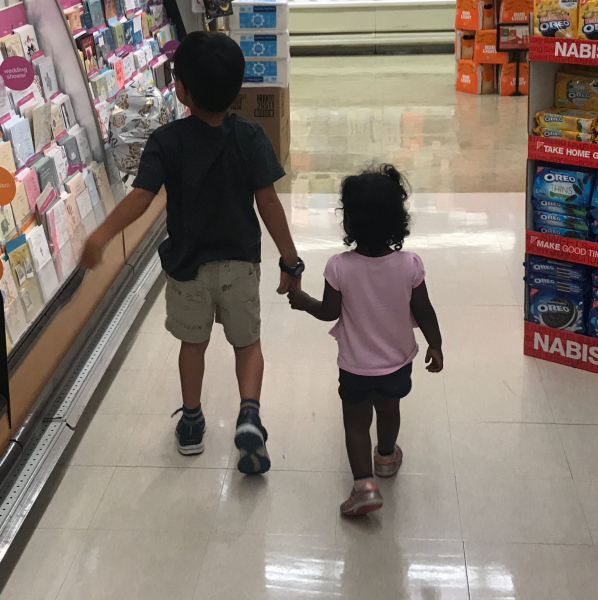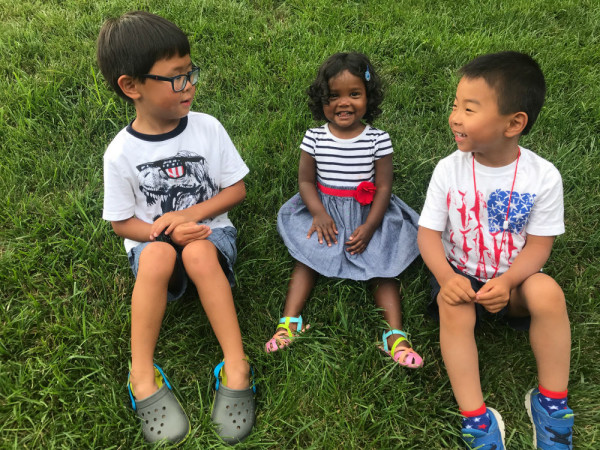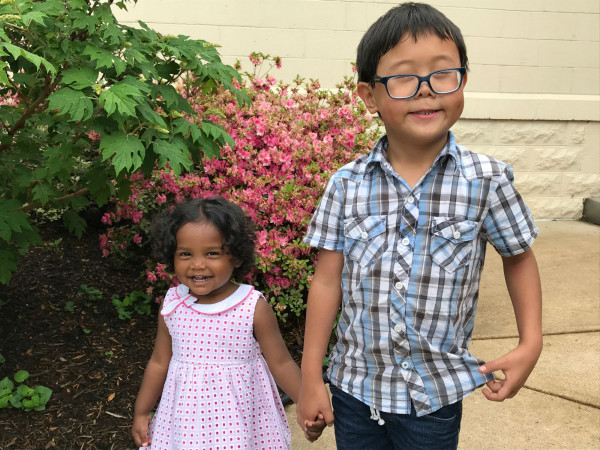Reflections on the Southwest Airlines Incident
This spring, Southwest Airlines found itself again in the headlines when an airline employee asked a young woman, Lindsay Gottlieb, to prove she was the mother of her one-year-old son, Jordan, before boarding a plane. Ms. Gottlieb is white, and her son is mixed race. The airline issued an apology to Ms. Gottlieb, but the incident drew criticism from both sides. Some were appalled the airline employee questioned a mixed-race family, and others supported the employee, citing the complexities of controlling child trafficking. My response was one of shock. Not at Southwest Airlines and not at Ms. Gottlieb, but rather at how many people were surprised by Ms. Gottlieb’s experience. For my family, Ms. Gottlieb’s encounter is our norm.
I’m standing in an aisle of Target debating Teddy Grams versus Goldfish for this week’s snack. My children run up and down the row of food. It’s 10:00 a.m. on a Tuesday, so the store is, thankfully, mostly empty. A woman approaches my daughter and bends down, “Aren’t you a cutie!” My daughter screams and backs away towards me. Only four months home, and we’re still navigating our way through attachment. I make my snack selections and usher both children back to the car. Once firmly locked in his car seat, my son says, “How come that lady asked if Mira was really my sister?” I eye him in the rearview mirror. “Families come in all shapes and sizes and colors.” My son thinks about this. “But people ALWAYS ask if Mira is my real sister.” At five years old, he has a point.

When it was just my son, Jack, we were a slightly conspicuous family. Two white parents and one Chinese boy. Most times when Jack and I are out together, it could be assumed my husband was a 6’2” Asian man. But with the adoption of my daughter, Mira, we have become utterly conspicuous. Two white parents, one Chinese son, and one Indian daughter. Everywhere we go, we stand out. Sometimes we invite smiles; sometimes we invite points and behind the hand whispers, and sometimes we get scowls. I love our multicultural family. I love that we get to celebrate and embrace traditions different from our Southern/German heritage. I love that our children found a forever home with us. But we are not a typical family.
On a recent trip to San Francisco, I too was stopped at the airline counter. Dutifully, I presented my daughter’s passport, Indian, and her Adoption Decree (which I carry for safe measure). The woman at the counter smiled, congratulated me and my daughter on our recent adoption, then issued our boarding passes. But here’s the thing. The white man standing in front of me with two young white children was not asked to provide a passport or any sort of documentation to prove he was their father. I could have said something, but instead, I just made my way to security.
As a transcultural, transracial adoptive parent, one of my jobs is to educate. When people ask “How much did your kids cost?” or “Why did their ‘real’ parents give them up?” I have a bag of responses at the ready. But reflecting upon the Southwest Airlines incident, I realize I need to do a better job. It’s one thing to face prejudice from a stranger at your local Safeway. It’s another when it is done in an institutional setting, like from an airline. A stranger you can write off. But an institution? I realize my response of “Families come in all shapes and sizes” is too simple. I realize I need to teach my children that color does matter. People will pigeonhole you for the way you look, and that is not okay. My children are constantly listening to what I say and how I respond, little pitchers have big ears after all. If I ignore racist or biased behavior, I send a signal to my children that the behavior we encountered was okay. So, what can we do as transracial adoptive parents?

We can create safe spaces for our children to talk. We can recognize and affirm their feelings from the encounter. We can acknowledge that we, in my case as a white parent, had a very different experience growing up. We can be clear and consistent in our message and give our children the tools they need to formulate their own responses to the situation. And, when necessary, we can confront the situation ourselves and work to dispel ignorance.
Back home I pull Jack onto my lap. “It bothers you when people say Mira is not your sister, huh?” My son nods, tears in his eyes. I understand this is not just about Mira; it’s about others accepting our identity as a family. “I know it must be hard,” I continue, “No one ever asked if Auntie Laura was my sister.” We launch into a conversation about family. About how his best friends Clay and Zach (both adopted from China) don’t look like their parents, but how Clay looks like his brother Christopher (also adopted from China). We talk about how cousin Riley (biracial) doesn’t look like her mom, even though she grew in her tummy. We reflect that maybe Clay and Zach and Riley get the same questions about their families that Jack does, and we brainstorm responses to those questions. I listen to his thoughts. I marvel at his ingenuity. I praise him for his courage. And I remind him I am always here to listen. Anytime, anywhere, under any circumstances. Always.
Because that’s what you do when you’re a family.









